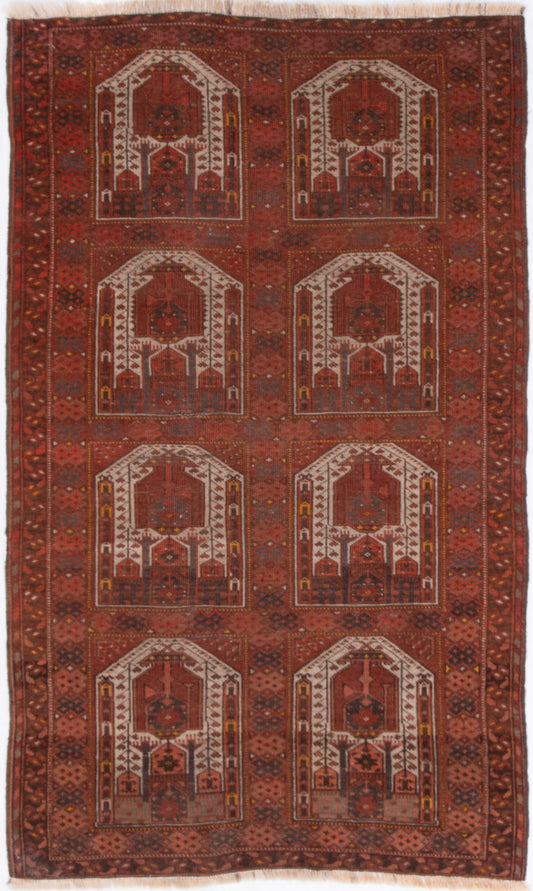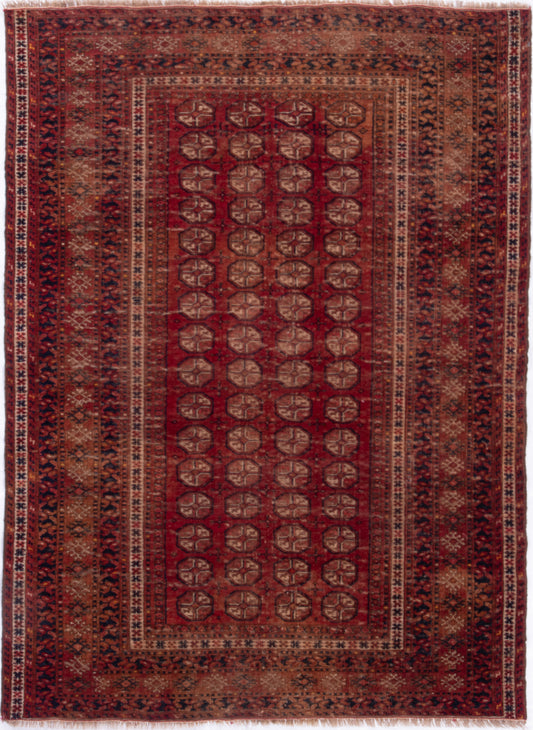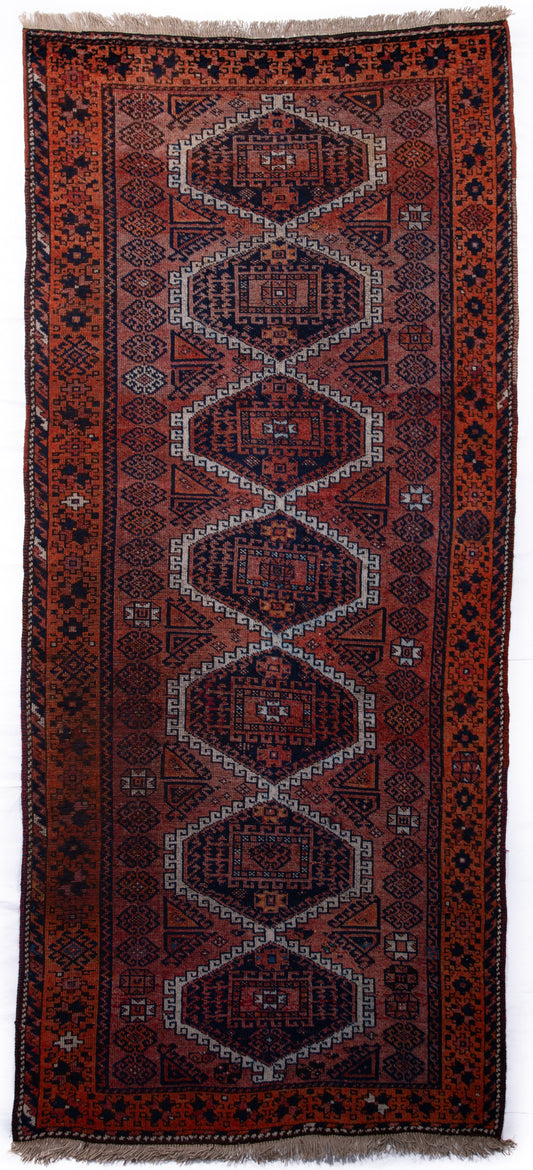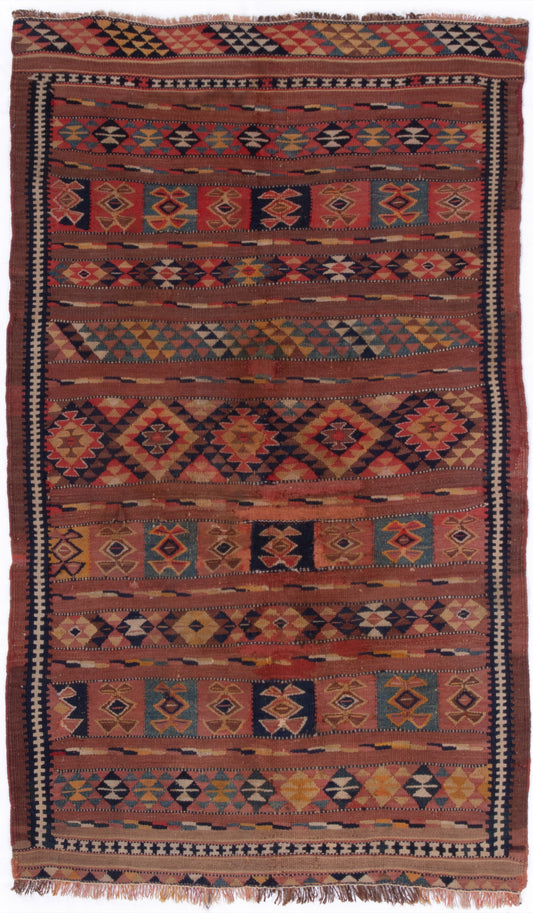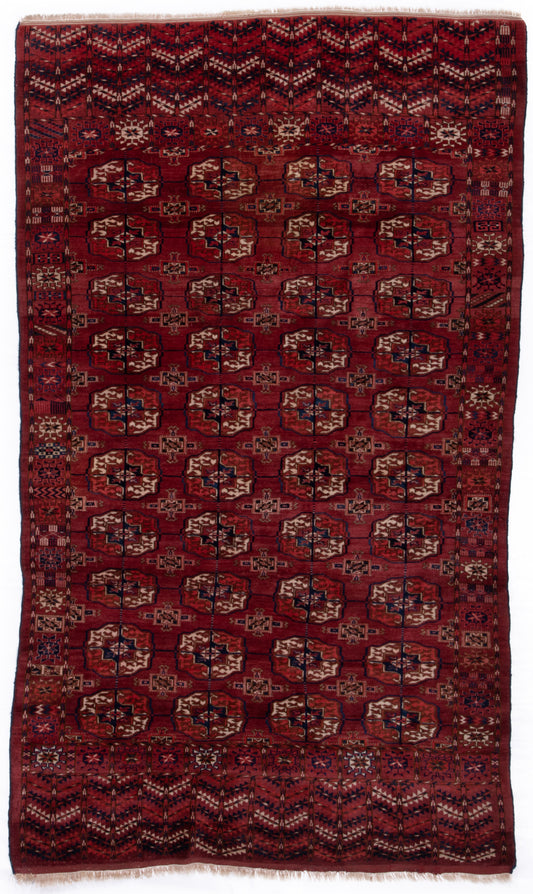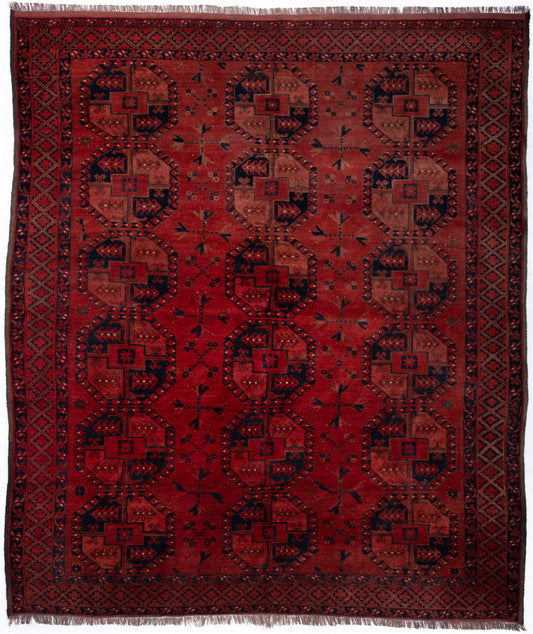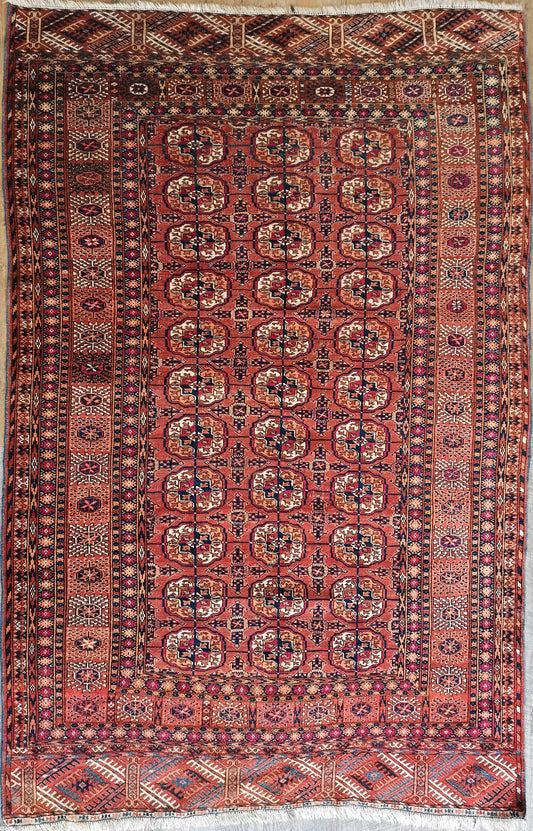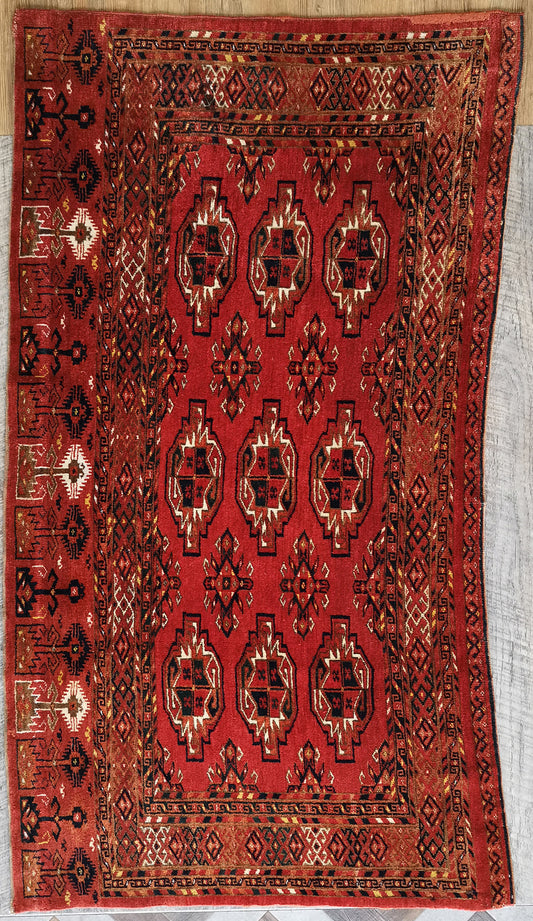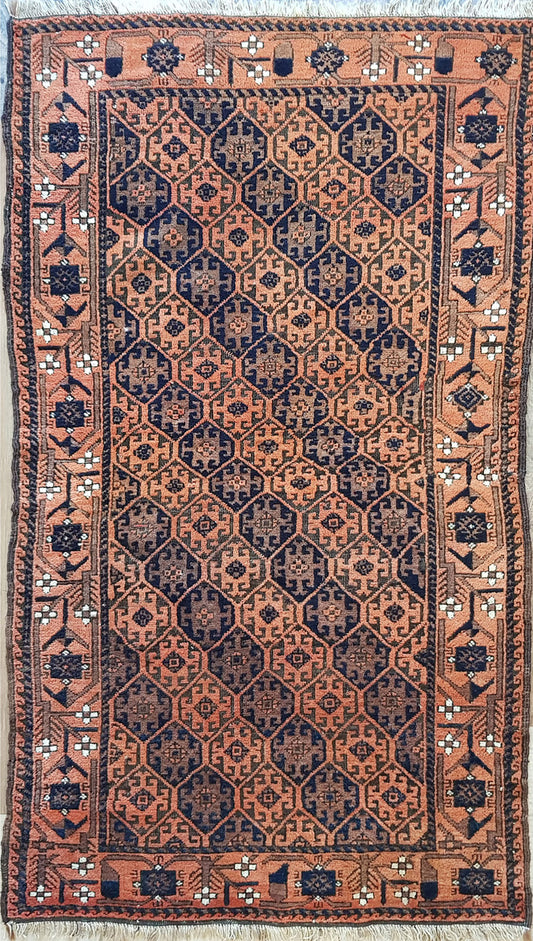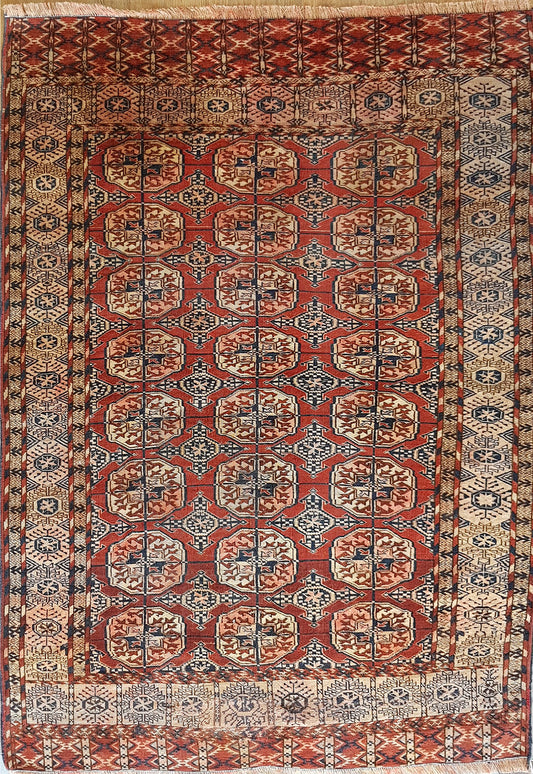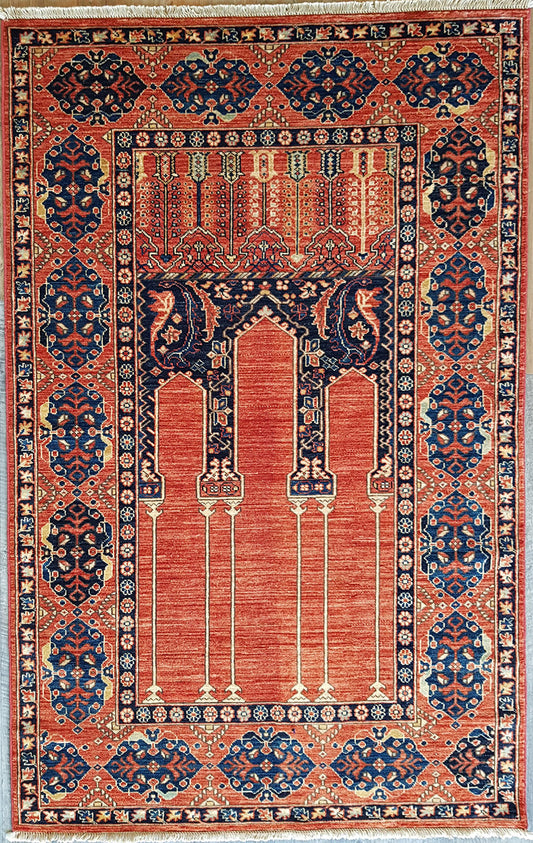Ersari Rug History & Origin Guide
Ersari Rugs: An Introduction
Ersari rugs are renowned for their rich colours, bold designs, and exquisite craftsmanship. Originating from the Ersari tribe, which is one of the largest Turkmen tribes, these rugs are a testament to the tribe's history, culture, and exceptional weaving skills.
History of Ersari Rugs
The Ersari tribe has a long history of rug weaving that dates back to the 18th century. They were originally a nomadic tribe, residing in what is now Turkmenistan and Afghanistan. Over time, the Ersari people settled in these regions and continued to produce rugs that have since gained international recognition.
Significance in Turkmen Culture
Rug weaving is an integral part of Turkmen culture, and the Ersari tribe is no exception. Ersari rugs were traditionally used as floor coverings, saddlebags, and tent decorations, serving both practical and aesthetic purposes. The production of these rugs is often a communal activity, with women playing a central role in weaving and designing the rugs.
Materials and Techniques
Ersari rugs are made from high-quality materials, typically hand-spun wool and natural dyes. The wool is sourced from local sheep, which is then carded, spun, and dyed using traditional methods. Ersari weavers employ the asymmetric knotting technique, also known as the Persian or Senneh knot, which allows for a higher knot density and more intricate designs.
Colours and Dyes
Rich, deep colours are a signature feature of Ersari rugs. They typically use shades of red, blue, and brown, along with other natural hues. The dyes are obtained from local plants and minerals, which are then applied to the wool using age-old techniques. This results in vibrant colours that are resistant to fading.
Patterns and Motifs
Ersari rugs showcase a wide range of patterns and motifs, reflecting the tribe's history and cultural influences. Some common elements found in Ersari rug designs include geometric shapes, stylised floral patterns, and animal motifs. The central medallion, known as the 'gul', is a prominent feature in many Ersari rugs and is often repeated throughout the rug's design.
Variety in Design
While certain motifs and patterns are distinctive to Ersari rugs, there is a great deal of variety in their design. This can be attributed to the diverse influences from neighbouring tribes and cultures, as well as the creativity and individuality of the weavers themselves. As a result, each Ersari rug is a unique work of art that reflects the weaver's skill, personal expression, and cultural heritage.
Climate and Environment
Geographical Location
Ersari rugs originate from the Turkmenistan region, which is situated in Central Asia. The area is known for its harsh desert climate, with hot summers and cold winters. This unique environment influenced the materials and techniques used in the production of Ersari rugs.
Climate Influence on Rug Production
The extreme weather conditions in the region led to the development of sturdy and durable Ersari rugs. The use of high-quality wool and tight weaving techniques ensured that these rugs could withstand the fluctuating temperatures, providing warmth during the cold winters and insulation from the scorching summer heat. The natural dyes used in Ersari rugs were also influenced by the climate, as they were derived from plants and minerals native to the region.
Visiting the Ersari Rug-Producing Region
Travel to Turkmenistan
Travelling to Turkmenistan, the home of Ersari rugs, can be an enriching experience for rug enthusiasts and tourists alike. The country boasts a rich cultural heritage, and visitors can explore various historical sites and landmarks. However, it is essential to be aware that Turkmenistan is an authoritarian country with strict entry requirements, so tourists need to plan their trip carefully and follow the necessary protocols.
Places of Interest
While in Turkmenistan, visitors can explore various sites of historical and cultural significance. Some recommended places to visit include:
- Ashgabat: The capital city, known for its striking white marble architecture and numerous museums.
- Merv: An ancient city and UNESCO World Heritage site, rich in history and archaeological remains.
- Kunya-Urgench: Another UNESCO World Heritage site, featuring impressive architectural monuments from the 11th to 16th centuries.
- Darvaza Gas Crater: Also known as the "Door to Hell," this natural gas field has been burning continuously since 1971 and is a popular tourist attraction.
How to Identify an Authentic Ersari Rug
When looking for an authentic Ersari rug, there are several factors to consider:
- Materials: Genuine Ersari rugs are usually made of high-quality wool, often with cotton or silk elements. The use of synthetic materials may indicate a non-authentic rug.
- Patterns and motifs: Familiarise yourself with the traditional patterns and motifs associated with Ersari rugs to help identify genuine pieces.
- Knot count: Authentic Ersari rugs typically have a high knot count, which contributes to their durability and intricate design.
- Natural dyes: Ersari rugs traditionally use natural dyes derived from local plants and minerals, resulting in a unique colour palette. Be cautious of rugs with overly bright or synthetic colours.
- Age: Antique Ersari rugs can be highly valuable, so consider the age of the rug as an indicator of authenticity. However, newer Ersari rugs can still be of excellent quality and craftsmanship.
Caring for Your Ersari Rug
Proper care and maintenance can help extend the life of your Ersari rug and preserve its beauty. Here are some tips for taking care of your rug:
- Vacuuming: Regularly vacuum your Ersari rug to remove dirt and dust. It is advisable to use a vacuum cleaner with gentle suction and avoid vacuuming the fringe.
- Rotation: Rotate your rug every six months to a year to ensure even wear and prevent sun fading in specific areas.
- Spot cleaning: In case of spills, blot the area with a clean, dry cloth. Avoid rubbing the stain, as it may cause damage to the rug fibres. For stubborn stains, consult a professional rug cleaner.
- Professional cleaning: It is recommended to have your Ersari rug professionally cleaned every few years, depending on the level of foot traffic and wear. This will help maintain the rug's appearance and longevity.
- Storage: If you need to store your rug for an extended period, ensure it is clean and dry. Roll the rug with the pile facing inward and wrap it in a breathable fabric. Store the rug in a cool, dry place, away from direct sunlight and humidity.
Investing in an Ersari Rug
Ersari rugs are considered an excellent investment due to their high-quality materials, intricate designs, and rich cultural history. When purchasing an Ersari rug, consider the following factors:
- Authenticity: Ensure that the rug is an authentic Ersari piece by examining the materials, patterns, knot count, and colours, as previously discussed.
- Condition: The condition of the rug is an essential factor in determining its value. Look for signs of wear, damage, or repairs that may impact its worth.
- Age: Antique Ersari rugs can be highly valuable, but newer rugs of exceptional quality and craftsmanship can also be a sound investment.
- Provenance: Rugs with a known history or provenance can add to their value, especially if they have been part of a notable collection or featured in exhibitions.
By taking these factors into account, you can make an informed decision when investing in an Ersari rug, ensuring that you choose a piece that will not only enhance your living space but also potentially appreciate in value over time.
Browse Our Current Selection of Ersari Rugs
-
Antique Afghan Ersari Rug
Regular price £975.00Regular priceUnit price per -
Antique Afghan Ersari Rug
Regular price £495.00Regular priceUnit price per -
Antique Afghan Ersari Rug
Regular price £2,175.00Regular priceUnit price per -
Antique Afghan Ersari Rug
Regular price £1,195.00Regular priceUnit price per -
Antique Afghan Ersari Rug
Regular price £1,495.00Regular priceUnit price per -
Antique Afghan Ersari Rug
Regular price £2,495.00Regular priceUnit price per -
Afghan Ersari Runner Rug
Regular price £980.00Regular priceUnit price per -
Antique Afghan Ersari Rug
Regular price £2,495.00Regular priceUnit price per -
Semi-Antique Afghan Ersari Rug
Regular price £595.00Regular priceUnit price per -
Antique Afghan Ersari Rug
Regular price £795.00Regular priceUnit price per -
Antique Afghan Ersari Rug
Regular price £2,495.00Regular priceUnit price per -
Afghan Ersari Rug
Regular price £1,625.00Regular priceUnit price per

